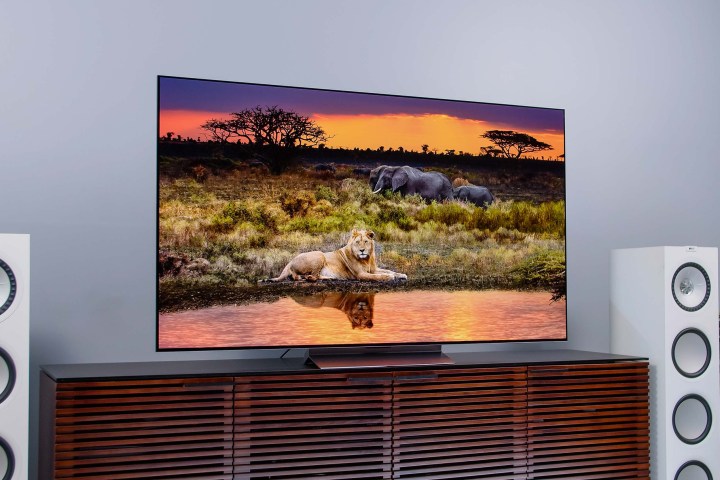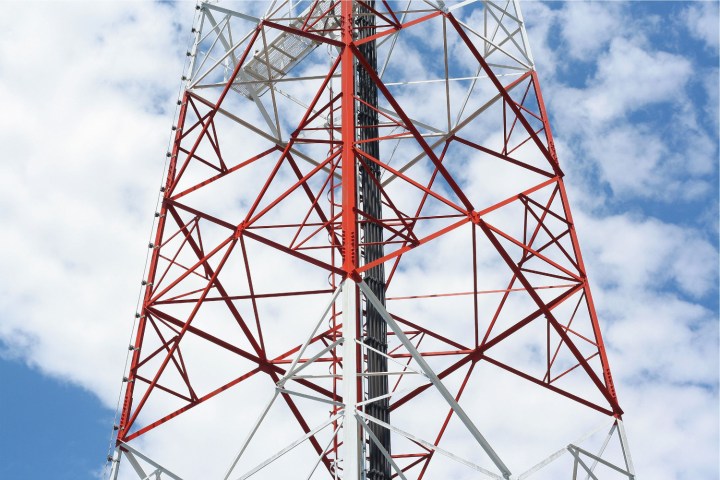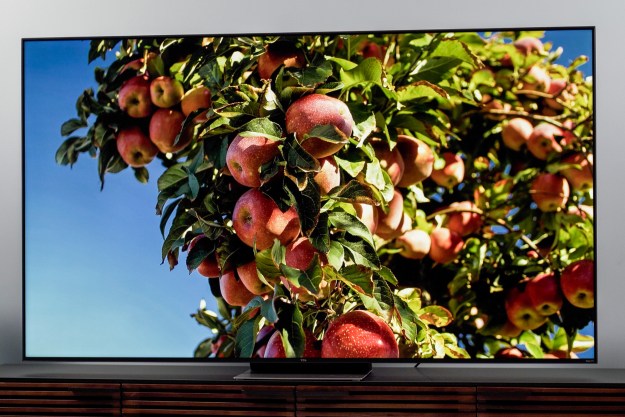ATSC 3.0 (also referred to as NextGen TV) is the future of over-the-air (OTA) TV, combining existing antenna technologies with internet-powered tools to deliver the next generation of digital broadcasting.
ATSC 3.0 upgrades our existing antenna TV system by establishing a new technical framework for how those TV signals are created, broadcast, and received. It supports higher resolutions like 4K and possibly 8K, along with much better sound. There’s even the potential for ATSC 3.0 to replace some uses of mobile data, especially within the automotive world. Here’s everything you need to know about ATSC 3.0.
What is ATSC 3.0?

ATSC 3.0 is the latest version of the Advanced Television Systems Committee standards, defining how exactly television signals are broadcast and interpreted. OTA TV signals currently use version 1.0 of the ATSC standards, which were introduced all the way back in 1996, initiating the switch from analog to digital TV that was finalized in the U.S. in 2009.
The switch to digital that ATSC 1.0 delivered helped to improve picture and sound quality, but it also laid the groundwork for a vast new world of broadcast content and interactivity. By leveraging the same underlying protocols as the internet, ATSC 3.0 makes these experiences possible.
Wondering what happened to ATSC 2.0? Yeah, good question. It was basically outdated before it had the chance to launch. All of the changes that were added in ATSC 2.0 have been integrated into ATSC 3.0.
What are the benefits?

The first major benefit is picture quality. While the current ATSC 1.0 standard caps out at 1080i, the new standard allows for 4K UHD broadcasts. Other picture quality upgrades, including high dynamic range (HDR), wide color gamut (WCG), and high frame rate (HFR) are all part of the new provision.
Right now, ATSC 3.0 uses the H.265 HEVC codec for video delivery because of its efficiency gains over the much older H.262 MPEG-2 codec used in ATSC 1.0.
ATSC 3.0 isn’t married to a single video format. Over time and through upgrades, it will be able to adopt newer codecs like the recently finalized H.266 VVC codec, which is the leading candidate to usher in 8K when that time comes.
ATSC 3.0 also includes benefits for reception, meaning you should be able to receive more channels of higher quality without the need for a large antenna. Audio quality is increased as well. While ATSC 1.0 uses Dolby AC-3 — an audio format that is limited to 5.1 channel surround sound — ATSC 3.0 uses the newer Dolby AC-4 for broadcasts of up to 7.1.4 channel audio, and it supports object-based sound formats like Dolby Atmos.
Cleverly, AC-4 can adapt to your gear, so if your TV or A/V receiver can support 5.1.2 Dolby Atmos, and it’s available on the movie you’re watching, that’s what you’ll get — but lesser components still get a version they can reproduce, too.
In addition to the picture and audio improvements, ATSC 3.0 also makes it possible to watch broadcast video on mobile devices like phones and tablets, as well as in cars. Advanced emergency alerts are also part of the standard, including better geotargeting, which means advancements like the ability to broadcast evacuation routes to areas that need that information.
Additionally, ATSC 3.0 utilizes Orthogonal Frequency Division Multiplex (OFDM) as part of its core encoding, compared to the 8VSB encoding used for ATSC 1.0, which means that the transmission and reception of ATSC 3.0 content should encounter far less interference than older 1.0 broadcasts.
More than TVs

Given that more and more people now use their phones as their primary video devices, it’s no surprise that ASTC 3.0 has been designed with mobile in mind. One Media 3.0, a subsidiary of Sinclair Broadcast Group — big backers of the ATSC 3.0 standard — introduced mobile receiver chips in January 2019 and even created an Android prototype phone that uses them. However, there’s still no word on when we’ll actually be able to buy them (or if they’re any good).
There’s even talk of ATSC 3.0 being integrated with existing 5G cellular networks. In fact, in 2021, Sinclair Broadcast Group teamed with South Korea’s SK Telecom to create CAST.ERA, a Virginia-based broadcast solution that promises impressive picture upscaling, low-latency transmissions, and more.
So will your next iPhone be ATSC 3.0-compatible? Probably not. Given its investment in its own paid streaming platform, Apple TV+, Apple doesn’t have a lot of incentive to provide customers with a free, high-quality broadcast option. But Android devices, especially those made by Samsung, Sony, and LG — the leading adopters of ATSC 3.0 in the TV world — could very well include the new standard in future models.
TV on wheels
NextGen TV could also find its way into your next car. A working group within the ATSC organization is starting to evaluate how ATSC 3.0 can be used to transmit audio, video, and other data to moving vehicles.
The possibilities run the gamut, including in-car advertising, over-the-air software updates, mapping, and driverless vehicle automation — ATSC 3.0 could even act as a backup or replacement for GPS technology. It’s all in the early stages as carmakers and companies that own large vehicle fleets explore the options, but it’s clear from these discussions that ATSC 3.0 can be much more than just a way to get high-quality TV shows into your home.
Datacasting: Delivering more than audio and video
The automotive discussion hinges on the fact that ATSC 3.0 can push huge volumes of data over its broadcast signals. That’s how it can scale picture and audio quality up to 4K HDR and Dolby Atmos. However, it turns out that the same bandwidth can be used to deliver a wide range of digital information that goes well beyond the ones and zeroes needed for television.
Since ATSC 3.0 uses Internet Protocol (IP) to deliver its A/V signals, it can broadcast any other kind of IP-based data, too. In theory, every home within reach of an ATSC 3.0 signal could get up to a 25Mbps IP data download, independent of their existing internet access.
Some have characterized this ability as Broadcast Internet, but that’s a misleading label. Unlike an actual internet connection, ATSC 3.0’s datacasting is one-way only, which means it can’t act as a substitute for your home or mobile internet data plans.
Still, the possibilities present with IP-based datacasting are intriguing. Almost 20 years ago, Microsoft unveiled a system called MSN Direct, which used FM frequencies to send small amounts of data to devices like Spot-equipped smartwatches. News headlines, sports scores, weather, and even personalized information like MSN Messenger texts and calendar reminders were all part of the platform.
Datacasting over ATSC 3.0 could massively expand these scenarios without the corresponding LTE/5G data fees that most of us pay for this kind of mobile data delivery.
A possible hurdle to the datacasting feature is that broadcasters may not want to get into the IP data delivery business. After all, it’s a very different business than the one they’ve traditionally operated. To address this, the FCC has scaled back on restrictions between broadcasters and third parties for the sake of innovation and expanding the reach of ATSC 3.0.
What are the downsides?
ATSC 3.0 is not backward compatible with ATSC 1.0, which means that if your TV doesn’t include an ATSC 3.0 tuner (here’s a complete list of every TV that supports NextGen TV), you’ll need an external converter to make use of those signals. You may only need a single ATSC 3.0 tuner for every TV in your house, however. Current ATSC 1.0 tuners like the Tablo or Fire TV Recast can redistribute HD OTA signals over your home network — via Ethernet or Wi-Fi — and there’s no reason ATSC 3.0 tuners couldn’t do the same thing.
One other possible downside, depending on how you look at it, is that the same geotargeting that allows for advanced emergency alerts can also be used for targeted ads. This means the ads you see on TV will start to more closely resemble what you see online. We’re not yet sure how this will play out for major advertising events like the Superbowl, but on the whole, if targeted ads don’t bother you on the web, they shouldn’t bother you on your TV.
How does it work?

As mentioned above, ATSC 3.0 combines OTA broadcast signals with your home internet. At the base level, actual programming like shows and movies are broadcast and received over the air, while commercials, on-demand, and other premium content are provided over the internet. Three different video formats are supported: Legacy SD, which supports resolutions up to 720 x 480; Interlaced HD, which supports signals up to 1080i; and Progressive Video, which supports resolutions from 1080p up to 4K UHD.
What gear do I need?
At a minimum, you will need an OTA antenna — we have a handy resource to help you find one if you don’t already own one — and an ATSC 3.0-compatible tuner.
Setting up an ATSC 3.0 tuner should be as easy as connecting it to your antenna’s cable and either plugging in an Ethernet cable or configuring it to use your home’s Wi-Fi.
Do I need a new antenna?

No, all existing Digital HDTV OTA antennas are already capable of receiving ATSC 3.0 broadcasts. The number of stations you can receive will depend on various conditions like weather, your distance to the broadcast tower, and local geography. A more capable antenna might improve your reception.
Do I need internet access?
No. Even though ATSC 3.0 OTA broadcasts are designed to work hand-in-hand with content delivered over the internet, you do not need an internet connection. Using just your antenna and an ATSC 3.0 tuner, you’ll be able to watch every local station that is broadcasting in the new standard. But many of the more interesting features of ATSC 3.0, like customized ads, on-demand content, interactivity, and premium content, will require an internet connection.
Despite sounding like a standard that is locked-in, ATSC 3.0 is actually still undergoing active development. This means that new features could be added at any time. Should that happen, your ATSC 3.0 tuner will need to receive a software update, and that will likely require an internet connection.
Am I going to need a new TV?
The short answer is “no.” As explained above, if your TV doesn’t support ATSC 3.0, you’ll be able to get by with an external converter box. However, those external boxes will be hard to come by, at least in the short term.
Right now, we’re recommending SiliconDust’s HDHomeRun Flex 4K as our go-to ATSC 3.0 converter, which includes four tuners.
Tablo, another popular OTA tuner, has also released an ATSC 3.0 DVR, known formally as the ATSC 3.0 QUAD HDMI.
There’s also this converter from GeniaTech, but it’s mainly designed to plug into computers, not TVs.
If you happen to be in the market for a new TV and you want to future-proof yourself, several TV makers, including LG, Sony, Samsung, and now Hisense, are now selling ATSC 3.0-compatible TVs for the U.S. market.
LG, which has been actively involved in the development of ATSC 3.0, will offer ATSC 3.0 compatibility on both its G2 and Z2 OLED TV models. Hisense will offer ATSC 3.0 on all of its 2022 TVs except the U6 series.
Want a quick guide to guide to the transition? We’ve rounded up everything you’ll need to prepare for switching to ATSC 3.0.
What if I don’t care about ATSC 3.0?
It’s worth mentioning that if you have no interest in the benefits of ATSC 3.0, you can simply stick with existing ATSC 1.0 broadcasts. Unlike the switch from analog NTSC video to digital ATSC video, which was a mandatory one, the Federal Communications Commission (FCC) approved ATSC 3.0 in a way that allowed stations to broadcast in the new format on a voluntary basis. More to the point, stations that do voluntarily broadcast in ATSC 3.0 must continue to offer ATSC 1.0 signals for at least five years after the switch.
So, if you’re content with the status quo, there’s nothing forcing you to change, at least not in the near future.
When can we expect ATSC 3.0 to arrive?
ATSC 3.0 is already here. In late 2021, Fox Television Stations and Nextstar Broadcast Group converted three Los Angeles stations to the ATSC 3.0 format, with similar station conversions carried out in Wisconsin this past January.
By the end of 2022, we can expect more markets across the country to get ATSC 3.0-broadcasting stations, according to ATSC.org. These include Fox television stations, NBCUniversal-owned television stations, Univision, SpectrumCo (whose members include Sinclair Broadcast Group and Nexstar Media Group), and others.
Is ATSC 3.0 available in my area?
For an up-to-date look at the markets where ATSC 3.0 is available and which regions are on track for future deployments, check out this handy map from ATSC.org.
Keeping expectations in check
As enthusiastic as we are about all of the benefits that ATSC 3.0 will bring, we don’t expect to see them immediately. In Portland — one of the very first markets to begin 3.0 broadcasting — video resolution is currently restricted to HD, and it likely won’t look any different than current ATSC 1.0 signals.
According to the ATSC in 2020, “The 3.0 hosts could eventually offer 1080p 60 HD with high dynamic range (HDR), pending available content from the networks, and maybe even 4K UHD,” but the dream of a full roster of channels broadcasting in 4K HDR around-the-clock is probably years away.
Editors' Recommendations
- What is Sonos? The speakers, app, and everything you need to know about wireless music
- The first Roku-made televisions are now available at Best Buy
- The best wireless headphones for 2023: which should you buy?
- Best headphones for 2023: Sony, Sennheiser, Apple, and more
- The best smart speakers for 2023







